I often say that having a goal, or the over-used term “bucket list” is a means to an end to aid in fulfillment of the old adage, “It’s the journey, not the destination.” If I did not have the goal to see all the national parks in the US, why on earth would I make the journey to North Dakota? Without Theodore Roosevelt National Park in my sights as my 48th national park with a capital “P,” there would be no reason to come to North Dakota. And with that, let me just say that there is no other reason that I see to come to North Dakota!
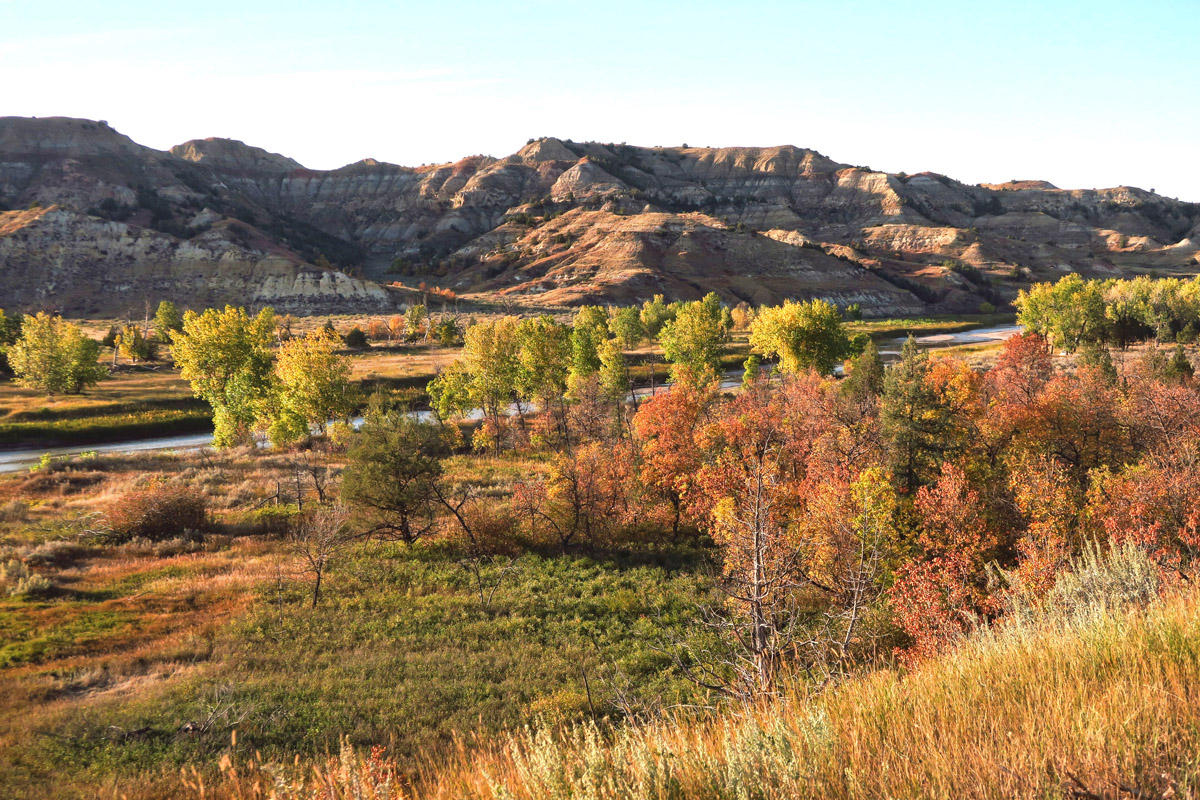
Cottonwood Campground gets its name for the beautiful groves of cottonwood trees growing along the Little Missouri River.
North Dakota strikes me as a state of dichotomy. Flat planes versus canyon lands and badlands. Just as Big Bend National Park does not look like any of the rest of Texas, Theodore Roosevelt National Park does not look like the rest of North Dakota. They are both isolated islands of natural beauty, surrounded by vast areas of flat, boring plains, oil fields and farmland.
Theodore Roosevelt National Park is actually three different sections, the South and the North Units separated by sixty-eight miles, and Elkhorn Ranch down an unpaved road. (Heavy rains prior to my arrival prohibited a visit to the ranch location.) One must make the effort of a 90 minute drive down a lone two-lane, 18-wheeler transport truck corridor to visit both the South and North Units. Since the South Unit is the larger, more established, I make it my first stop. I figure I’ll decide after a few days whether to venture on up to the North Unit.

Peaceful Valley Ranch, the only original ranch house remaining, served as original headquarters when park was established in 1947 until VC was built in Medora in 1959.

Peaceful Valley Ranch has bison visitors who come to eat the horses left-overs. This one is having a good scratch on the fence post.
The Visitor Center is closed when I arrive. Major construction is underway in the parking lot, and the VC is shut down due to the power being out while they work. So I proceed directly to the Cottonwood Campground, the only campground within the park. There are two loops in the campground. It’s shaped like a figure 8 with one loop having long pull-throughs and more level concrete pads, while sites in the other loop are shorter, closer to the river, and can be a bit unlevel. Still, I choose the left loop to try to avoid generator noise. At this time of year when the temperature drops, it’s a trade-off. Campers in larger RVs tend to spend more time inside running their generators longer to power their furnaces, whereas campers build smoky fires to stay warm. Since the temps are dropping down into the 30’s at night, I won’t likely have my windows open, so I’ll risk the smoke over the constant “rat-a-tat tat” of reverberating generators.
Not knowing whether I would make it this far north, I have done little research. Having to bypass the Visitor Center, I am at a loss to see what this park has to do with Theodore Roosevelt, as there is nothing visible within the park or informational kiosks to link the two together. There’s a 36-mile scenic loop drive and a few short hikes, but otherwise it’s a bit anticlimactic after the South Dakota Badlands.

This is from the Coal Vein Trail, location of 12 foot-thick coal vein (see dark strip.) Here, an underground coal fire burned from 1951 to 1977. Land at site of fire collapsed.

Chimneys formed when coal fire caused air to be sucked down into cracks, Fire burned up the cracks and baked rocks inside into hard clinker called porcellanite. Surrounding sediment eroded, leaving behind a chimney.
It’s later in the week when I make the return drive through the five mile construction zone to the Visitor Center that I learn the history of how the park came to honor the man. Roosevelt came to this area in 1883 to hunt buffalo. He purchased the Maltese Cross Cabin as his first temporary home, named for the eight pointed cross used as the ranch’s cattle brand. It was first a temporary home, but after losing both his mother and his wife on the same day the following year (on Valentines Day, no less!) he returned to North Dakota seeking solitude and a place to regroup. He credited North Dakota with altering the course of his life, saying “I would not have been president had it not been for my experience in North Dakota.”

Roosevelt and ranch hands hammered spent rifle cartridges into the end of cabin log into the shape of Maltese Cross brand. All logs are original ponderosa pine used in 1883.

Roosevelt’s rocker. He was known to get so excited when discussing politics that he would rock himself all around the room. Maybe I need a rocking chair..
He later relocated to Elk Ranch, which is a third Unit of the park, though nothing remains of the buildings. The Maltese Cross Cabin on the other hand, has traveled from the World’s Fair in St. Louis, Missouri to Portland, OR for the Lewis and Clark Centennial Exposition, back to Fargo, ND, and then the state capital in Bismarck, ND. Having been restored, it now rests in back of the South Unit Visitor Center.

The Visitor Center contains artifacts from Roosevelt’s Presidential term, including the shirt with bullet hole he was wearing when shot in 1912 while giving a stump speech.
Roosevelt was known as the “conservationist president for good reason. From the NPS website, “After becoming president in 1901, Roosevelt used his authority to protect wildlife and public lands by creating the United States Forest Service (USFS) and establishing 150 national forests, 51 federal bird reserves, 4 national game preserves, 5 national parks, and 18 national monuments by enabling the 1906 American Antiquities Act. During his presidency, Theodore Roosevelt protected approximately 230 million acres of public land.”
“We have become great because of the lavish use of our resources. But the time has come to inquire seriously what will happen when our forests are gone, when the coal, the iron, the oil, and the gas are exhausted, when the soils have still further impoverished and washed into the streams, polluting the rivers, denuding the fields and obstructing navigation.” ~ Theodore Roosevelt
It’s difficult to imagine where we would be today without him…or where we will be in the future without the likes of him.
After three days in the South Unit of the park, I am still undecided on whether to make the drive to visit the North Unit. As I sit at the front of the line of traffic stopped for construction exiting the park where the road narrows to one lane, I engage in a conversation with the man wearing the lime green safety vest, his dreadlocks protruding from his safety helmet. He holds the reversible stop sign on a pivoting pole while waiting for the pilot car to lead the opposing lane of cars through the slow five mile crawl, so we have plenty of time for a chat.
He asks where I’m headed, and I tell him I’m still undecided. Either north to visit the other side of the park, or south back in to South Dakota. As Bob Marley tunes blare from his boom box behind him, he tells me, “Skip it! You’ve seen all there is to see! It’s not worth the drive…just more of the same. In fact, skip the rest of North Dakota altogether for that matter, and head back down to South Dakota! You’ve already seen the best of it. Trust me on this…it’s all downhill from here…”

My dad always said when cows were lying down, it meant rain was coming. Wonder if the same goes for bison…





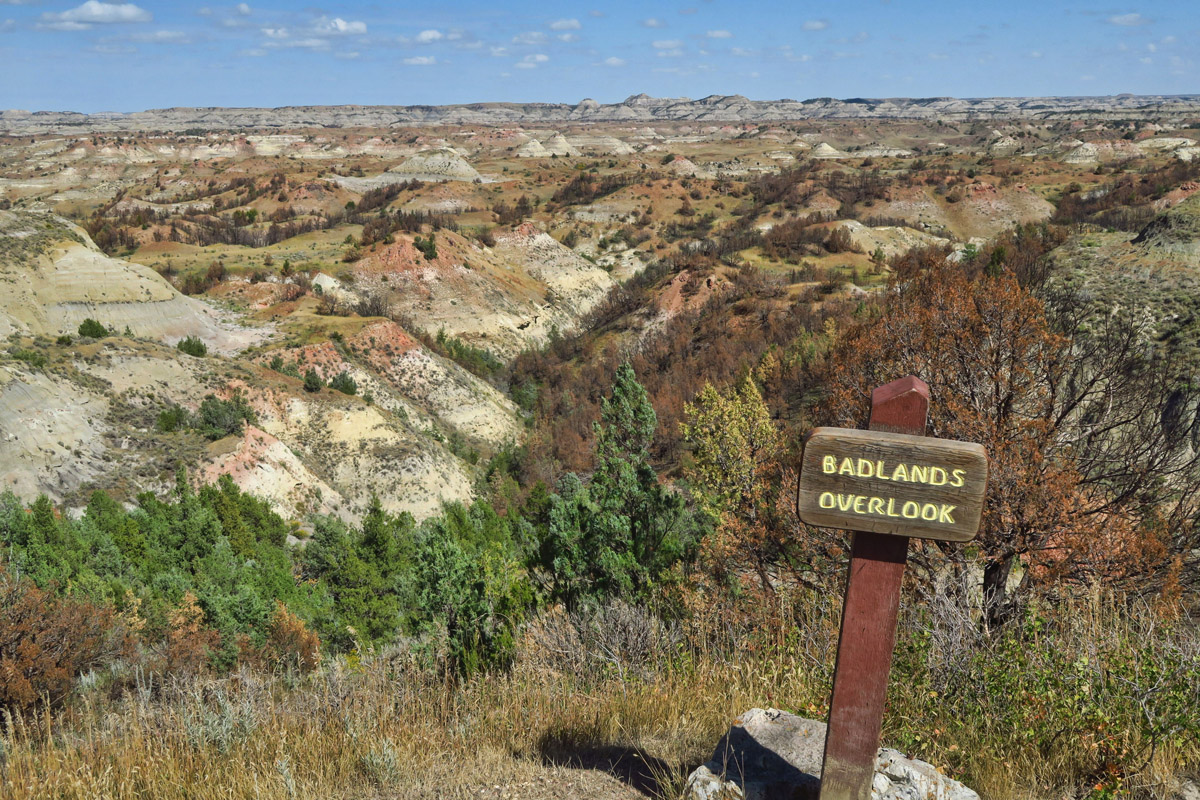

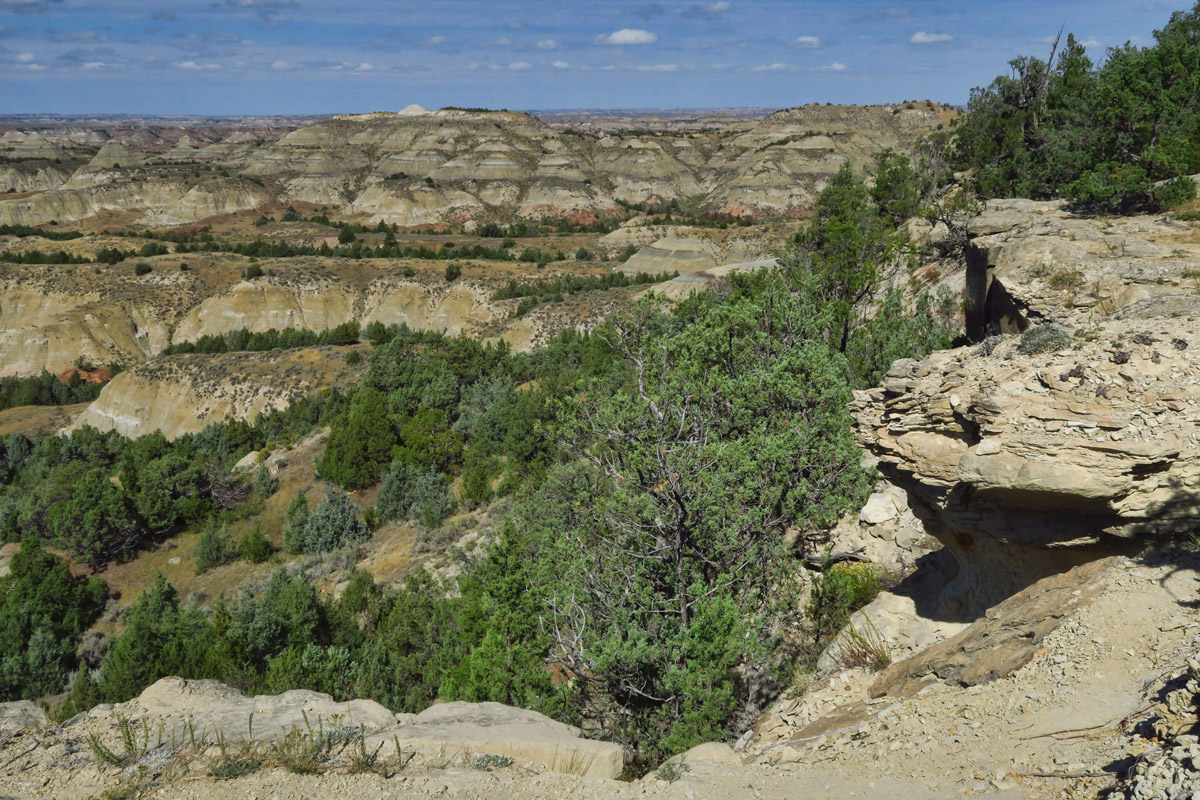
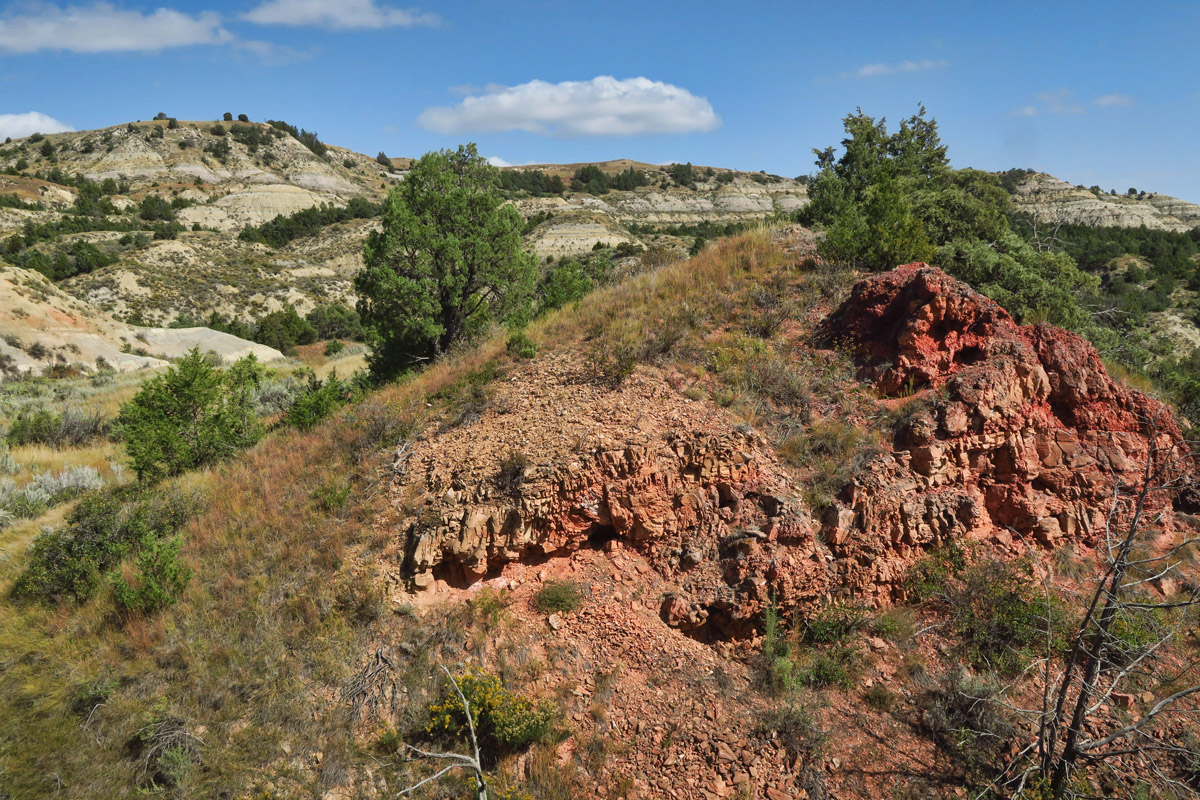
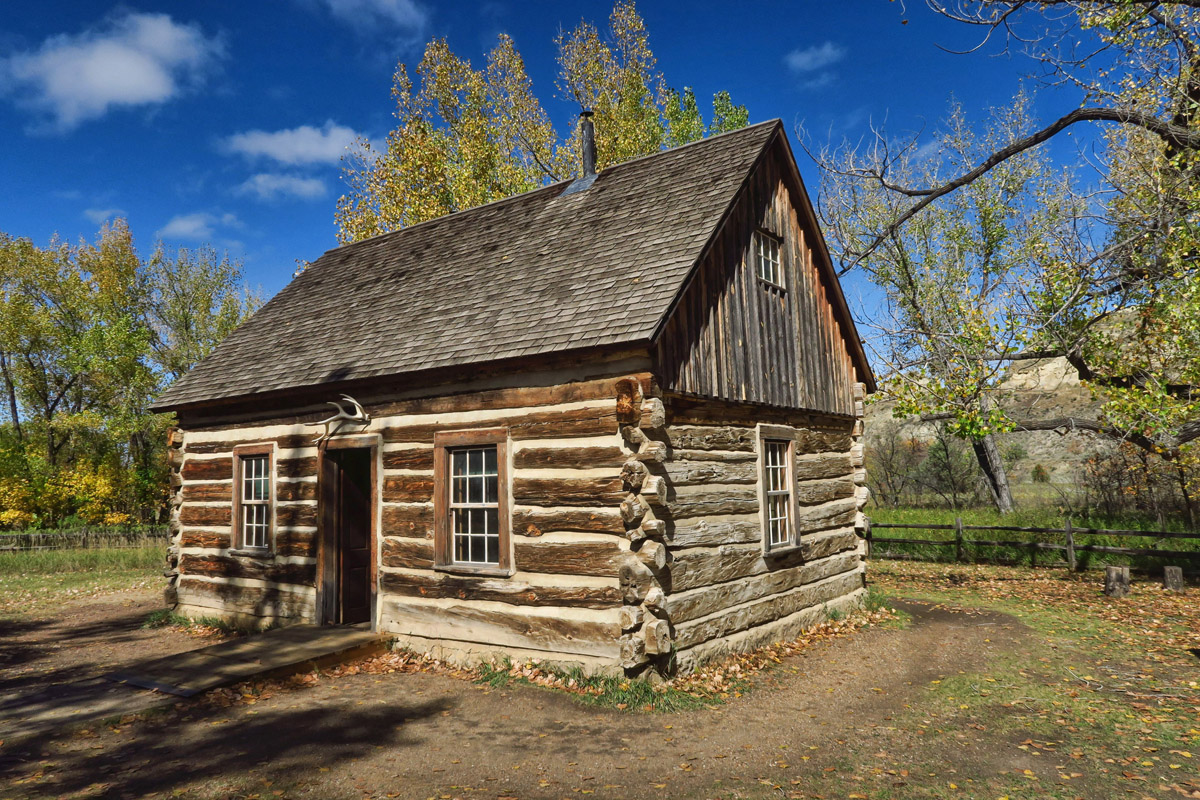
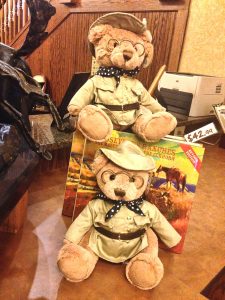





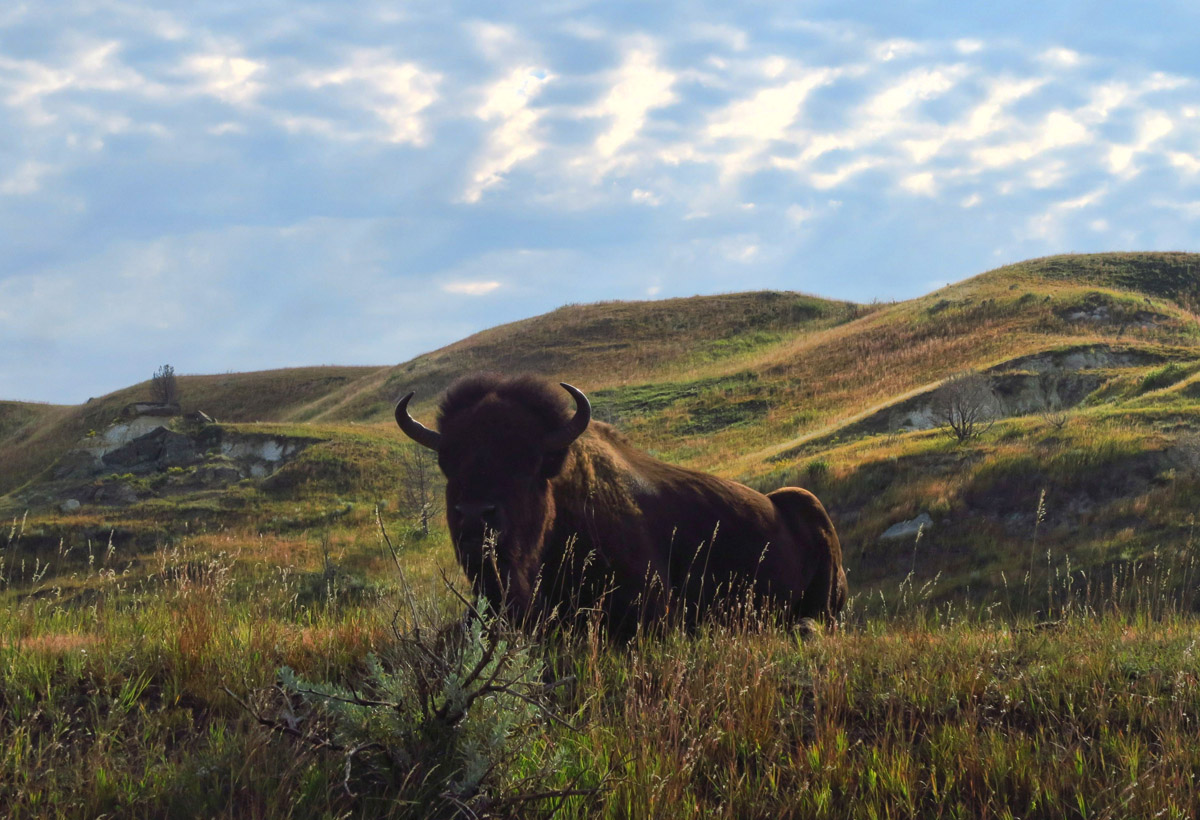

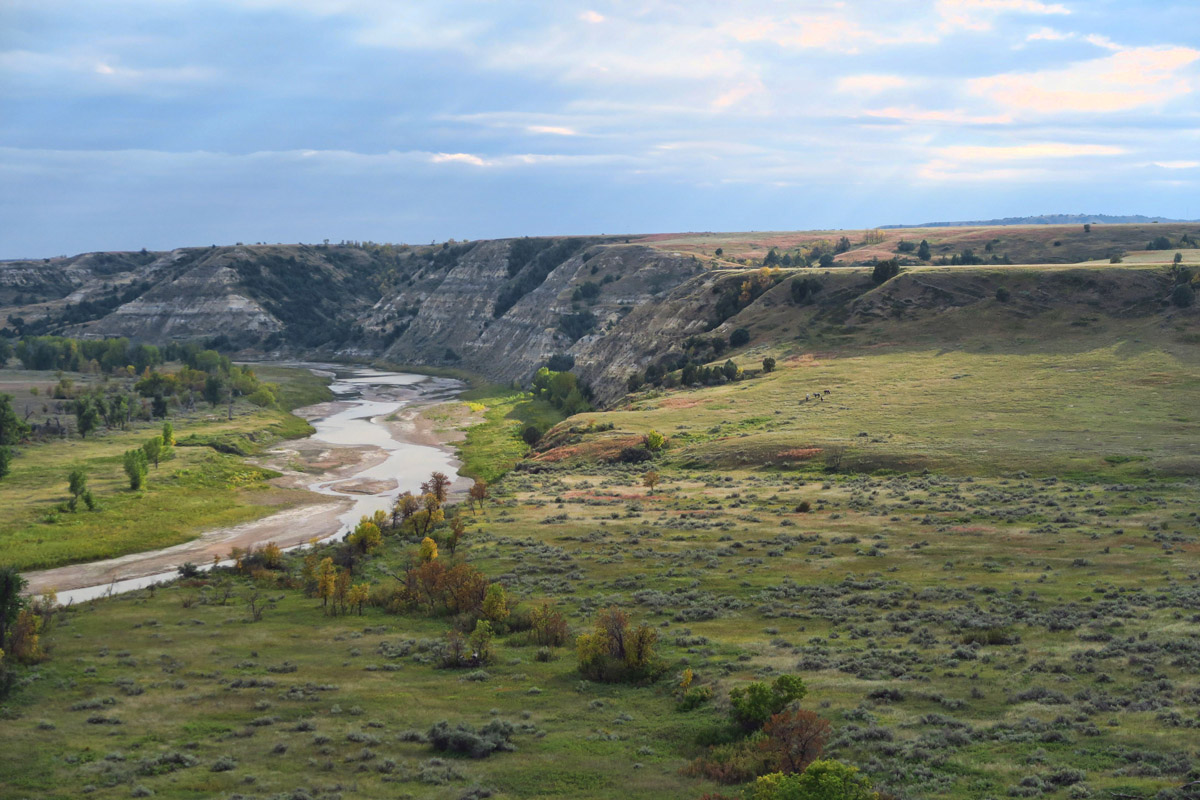
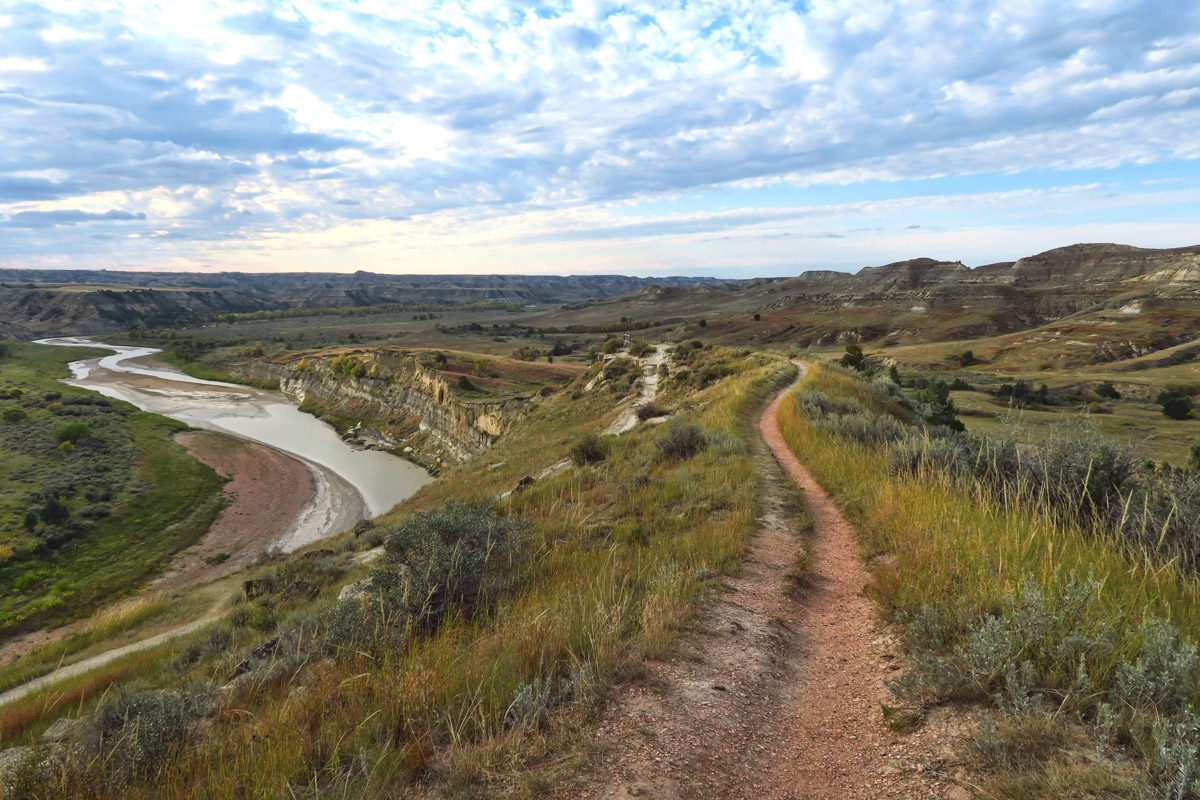
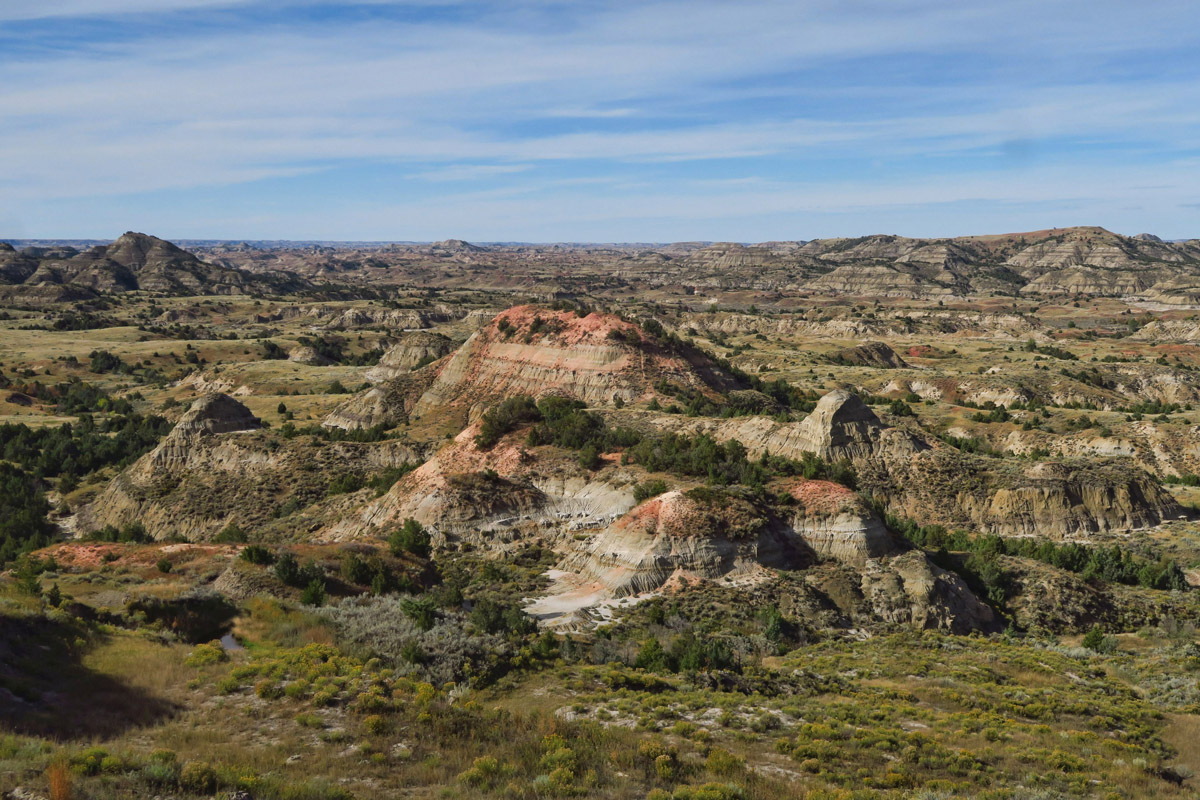
We actually liked the North more than the South, it was all “wild” once you got off the highway. I shot some great photos of the wild horses there. Missed the Medora Musical by a week as the college kids had already left town.
There is a great Maine connection to Roosevelt’s Ranch:
https://www.nps.gov/thro/learn/historyculture/bill-sewall-and-wilmot-dow.htm
A fantastic history of the relationship between Sewell & Roosevelt:
https://www.amazon.com/Becoming-Teddy-Roosevelt-Inspired-President/dp/1608931749/ref=sr_1_1?ie=UTF8&qid=1540326452&sr=8-1&keywords=Becoming+Teddy+Roosevelt
Thanks for the tip on another good TR book, I’m familiar with the great relationship between him and Sewall in other books, will definitely read this book as I’m a huge TR fan.
Your photos of ND are wonderful! I was in many parts of ND and agree with you Suzanne. While paddling a canoe up the Little Missouri about 7 yrs ago, we surprised a bull bison which was rolling around the shoreline taking a dust bath. It approached the center of the little tiny river when it shook itself off to show off its massive head. No herd was in sight, just the huge bull. There was a 10 minute stand-off and I was VERY nervous, so we decided to turn around and go back to where we started. We were miles away from any highway, and so I agree with John, parts of ND far away from the the oil/gas locations/businesses are WILD and wonderful.
Great photos of a wonderful place. Teddy is an icon of mine, a true treasure. Love this place for other reasons, Mo was born not far from here in Killdeer, with lots of generations of family history going back on homesteads in this part of North Dakota. Those Czech imigrants were a hardy bunch!`
Oh dear.
I enjoyed the trip and lifted your quote from Teddy. There is more to like than dislike about him.
Jim
After 70 Years of living come across with new word : dichotomy
Thank you Suzanne, for expanding the horizons of my knowledge.
We too have only been to the South Unit and really enjoyed our visit there. Reading your post and seeing your pictures makes me want to plan another trip there!
I can only dream that when I’m in an assisted living facility someday…..that I’ll have you as a roommate!
I’ve thought the same thing too!!!!
Char, you (and Terri Reed) make me laugh!! I guess I passed the roommate test if you didn’t kick me out because of snoring at Phantom Ranch, huh? haha!! Thanks for following along.
Wow, you are ruthless in your critique. First, Rapid City, and now North Dakota? Careful or you’ll piss off the guy who lives there.
Where did I speak disparagingly about North Dakota? Oh, wait. It must have been the quote that said “It was love at first sight,” right?
Uh, no. It was based on you saying;
“let me just say that there is no other reason that I see to come to North Dakota!”.
I thought it was funny, and was being glib.
You didn’t say your quote until the next post, which I hadn’t yet read.
Oh, okay. Got it. Well, I think I am safe as I doubt I have many followers from North Dakota. 😉 Besides, I have said far worse things about my own birthright state, so at least I am an equal opportunity offender. Thanks for following along, Jim…
I liked the north part of the park as well as the south, but then I had plenty of time to explore. Terry had to make an emergency trip back home while we were in the park, as his father was very ill. I have some unpleasant memories of North Dakota, so except for the park, I don’t plan to make a return visit.
Okay. So Nort Dakoootaahh is off the list! I got a couple chuckles out of this post though…those were the most pitiful wild turkeys I’ve ever seen–they looked to be down to skin and bones compared to the fatties hunted here in my neck of the woods! And the vision of TR getting so excited about politics he would “rock himself around the room” made me laugh out loud. 🙂 Thank God for Theodore Roosevelt’s stance, and, more importantly, action, with and about land preservation. As a nation we seem to be teetering on the brink of losing all that was set aside as sacred so many generations ago, which is a frightening thought.
On a lighter note…this probably isn’t your cup of tea to write about, Suzanne, but I’d love to see/hear/view your thoughts on the camper/rv selection process. I know, I know…it’s such a subjective deal boiling all the way down to individual *comfort* needs/wants, but I thought about the comparative process when you mentioned the smoke (camper) vs generator (rv) thing.
Having just completed a month long journey hauling my 14′ travel trailer behind me I find myself reassessing true “housing” need when it comes to travel and exploration. Seems like everyone who travels is either buying, selling or trading (up or down in size) these days…makes me wonder if anyone ever finds a perfect fit over any given length of time. But! Another thought for another day. 🙂